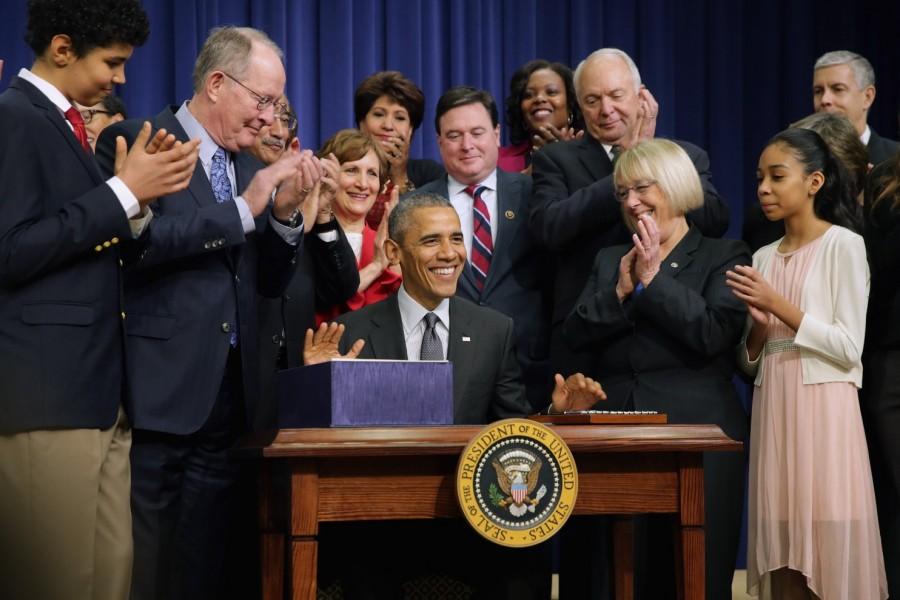Every Student Succeeds Act aims to prepare students for their future
On Thursday, Dec. 10, 2015, President Barack Obama passed a new education law known as the Every Student Succeeds Act. The ESSA builds on the success of the two laws that preceded it. In 1965, President Lyndon B. Johnson introduced the first of a series of educational laws that addressed both civil rights and education. This law, the Elementary and Secondary Education Act, provided grants to low-income students, federal grants for textbooks, funding for special education centers and scholarships for low-income college students. The focus of the federal grants was to improve the quality of elementary and secondary education. In 2002, the No Child Left Behind Act, a new version of this law, was introduced during the Bush Administration. The goal of this law was to improve high school graduation rates and increase the number of students moving on to a college education.
“With this bill, we reaffirm that fundamental American ideal that every child, regardless of race, income or background, or the zip code where they live, deserves the chance to make of their lives,” said Obama in a public statement.
In addition to building on the success of the preceding laws, the ESSA focuses on preparing all students for success in college and careers. The key measures of this law include holding all students to the same academic standards, providing access for more children to preschool and preparing all students for success in both college and their future career.
“The ESSA is important because it not only allows students to thrive in high school, but also pushes them to excel in the real world,” said sophomore Danielle Walder.
Over the next few months, the United States Department of Education will be working with the states and districts to begin the implementation of ESSA. Since this new law eliminates many of the federal assessments and evaluations, it now puts the decision-making role in the hands of each state. There will be fewer punitive mandates dictated to the states on how students and schools should be evaluated. ESSA allows more flexibility regarding greater involvement from educators. The state legislatures will now play a major role in determining how ESSA is implemented and will need to partner with their school districts to design improved assessments and evaluations that will help to identify and to fix gaps in the current system.
“We are in a place that believes every child, no matter where they come from, can grow up to be anything they want,” said the President of the No Child Left Behind Act in a public statement. “I’m confident that if we fix the No Child Left Behind Act, if we continue to reform American Education to invest in our children’s future, that’s the America we will always be.”
The hope is to increase the number of students, regardless of race, gender or income, that succeed in graduating college and achieving successful careers.
“There is nothing more essential to living up to the ideals of this nation than to make sure every child is able to live up to their God-given potential,” said Obama.
Your donation will support the student journalists of Calabasas High School. Your contribution will allow us to purchase equipment and cover our annual website hosting costs.







